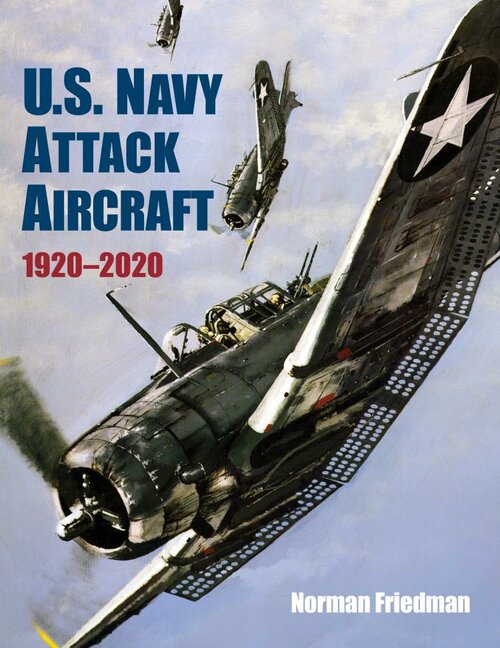- Joined
- 27 December 2005
- Messages
- 16,888
- Reaction score
- 21,589

U.S. Navy Attack Aircraft, 1920-2020
The U.S. Naval Institute provides an independent forum for those who seek to advance and strengthen the naval profession.
U.S. Navy Attack Aircraft, 1920-2020

By Norman Friedman
- Subject: Spring 2022 Catalog | World War II
- Format: Hardcover
- Pages: 480 pages
- Illustrations: 246 b/w illustrations
- Published: May 15, 2022
- ISBN-10: 1682474178
- ISBN-13: 9781682474174
- Product Dimensions: 11 × 8.5 × 1 in
- Product Weight: 24 oz
Overview
U.S. Navy Attack Aircraft, 1920–2020 is uniquely told from the point of view of the Navy, as understood through its previously-classified documents. Spanning a century from the earliest airplanes conceived to operate from U.S. carriers in 1920, to the current F-35 Joint Strike Fighter (JSF) Both the requirements and the available technology kept changing. In many cases the Navy drove the technology. Norman Friedman is the first to take the requirements and the available technology into account to explain the choices the Navy made. The airplanes the Navy bought were always designers’ attempts to meet specific demands set by the kind of warfare the Navy expected. The reader sees Navy successes and failures in guessing at the future. This is a unique way to understand the panoply of airplanes the Navy has relied on through the years, and why some succeeded but others failed. This history includes not only the airplanes adopted by the Navy, but also alternative proposals presented in design competitions that never made it to the flight deck. In many cases these other planes have been completely forgotten; they have never previously been published. Friedman not only examines the airplanes but also their weapons and their tactics—which in turn shaped other aircraft and the nature of air operations. In the case of Vietnam, with the declassification of key documents it is now possible to see how and why the Navy’s innovative approach to air operations triumphed over the integrated air defense system built by the North Vietnamese, with important implications for later successes, such as the attack on Libya in 1986. As told through the 1970s (as limited by security), the story is based almost entirely on the Navy’s own internal documents, including those setting carrier and aircraft policy and those describing design competitions. Later developments are described on the basis of public information.
This is the sequel to Fighters Over The Fleet: Naval Air Defence From Biplanes to the Cold War.
Last edited:

